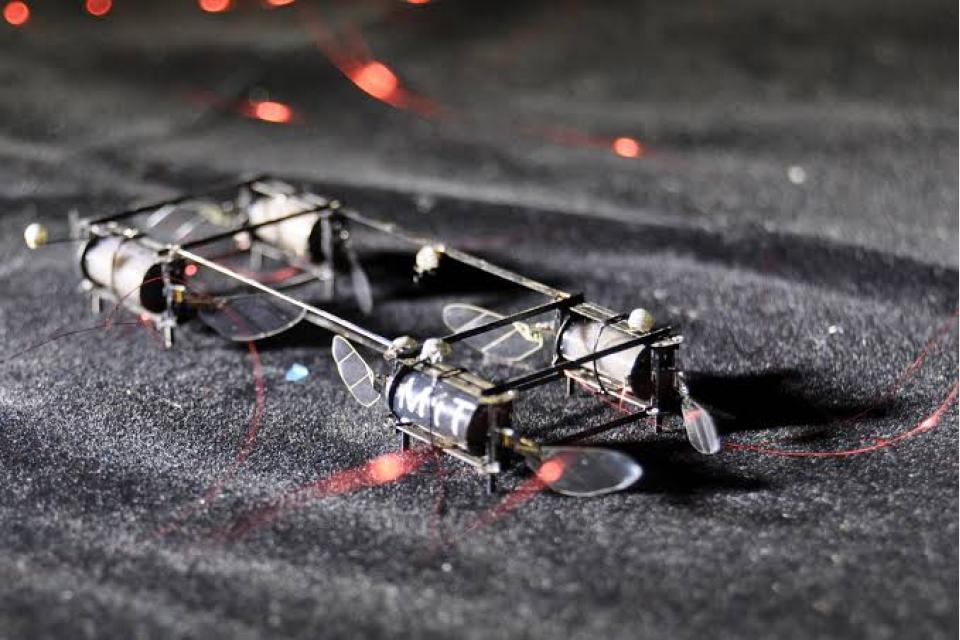Masks can be added to the electroluminescent particles to produce different colours and patterns.
Multiple microrobots can be controlled in sync in indoor and outdoor environments.
The electroluminescent particles allows for usage of cheaper and less sophisticated tracking systems.
Fireflies use their luminescence for communication, to attract mates, ward off predators and lure prey. Engineers at MIT have built bioinspired robots that use artificial soft electroluminescent muscles for tiny flapping wing robots, which emit coloured light during flight. The insect-scaled robots can use the electroluminescence to communicate with each other, for example signal others and call for help after finding a survivor during a search-and-rescue operation at a collapsed building. The ability to emit light also brings the robots one step closer to flying autonomously outside the lab. The robots are too lightweight to be loaded with their own sensors, so they have to be tracked with bulky infrared cameras that do not work outdoors. However, as the robots emit their own light, they can easily be tracked, even with three smartphone cameras working in tandem.
Senior author of the paper Kevin Chen says, "If you think of large-scale robots, they can communicate using a lot of different tools — Bluetooth, wireless, all those sorts of things. But for a tiny, power-constrained robot, we are forced to think about new modes of communication. This is a major step toward flying these robots in outdoor environments where we don't have a well-tuned, state-of-the-art motion tracking system." The researchers embedded the artificial muscles with electroluminescent particles, increasing the weight by just 2.5 per cent, and not impacting the flight performance of the robots.
The researchers have previously demonstrated a new fabrication technique to build soft actuators, that flap the wings of robots. The hardy artificial muscles are created by alternating ultrathin layers of elastomers and carbon nanotube electrodes in a stack, then rolling it in a squishy cylinder. When voltage is applied to the cylinder, the electrodes squeeze the elastomers, with the mechanical strain resulting in a flapping wing. Electroluminescent zinc sulphate particles were incorporated into the elastomers to achieve a glowing wing design. Transparent carbon nanotubes were used to develop an electrode that would not block out the light. The high frequency of the flapping wings help the electroluminescent particles shine brightly.
Chen says, "Traditionally, electroluminescent materials are very energetically costly, but in a sense, we get that electroluminescence for free because we just use the electric field at the frequency we need for flying. We don't need new actuation, new wires, or anything. It only takes about 3 percent more energy to shine out light."
The elastomer layers became brittle when infused with the zinc particles, so they were added only to the top layer. The elastomers had to be a few micrometers thicker. Lead author of the paper, Suhan Kim says, "We put a lot of care into maintaining the quality of the elastomer layers between the electrodes. Adding these particles was almost like adding dust to our elastomer layer. It took many different approaches and a lot of testing, but we came up with a way to ensure the quality of the actuator." The actuators can produce coloured and patterned light.









